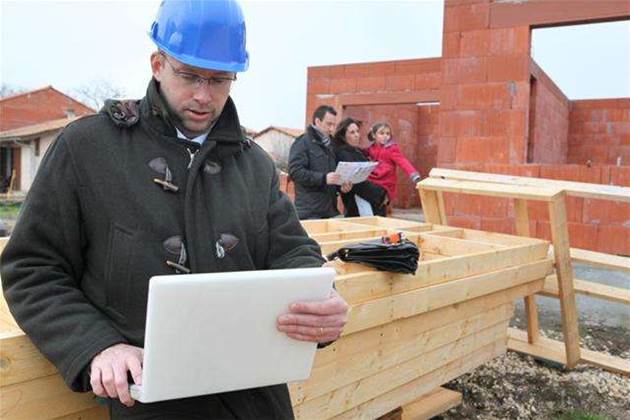This story is from our new sister site BIT. Visit bit.com.au for more technical tips and tricks for Australian small to medium businesses.

Perth luxury house builder RiverStone has replaced a fleet of Vodafone BlackBerry devices with iPhones and iPads to meet the demands of its staff and reduce its reliance on paper.
The firm has has long used smartphones to connect its distributed workforce of managers, designers, draftsmen and contractors.
When a server licence renewal notice recently came in, RiverStone defected to Apple -- in part, because those were the platforms staff preferred.
Operations manager Tim Marshall used the switch to roll out a “virtual office” to staff so they could be just as well informed in the field as they were at their desks.
He said issues with call drop outs on early iPhones and the Perth mobile networks stayed his hand for awhile, especially since "talking on the phone was still an important part" of the business.
The changeover allowed RiverStone to deploy Citrix Receiver remote desktop software on iPads and to standardise on iOS for its mobile fleet.
Citrix Receiver is a free app on the Apple AppStore that presents a user's remote desktop to them, virtually.
And it's easy for users to grasp, which is handy because RiverStone has no in-house IT manager. Users access content stored on the server as easily as surfing to a web page and it works on Mac, Windows desktop and mobile and Android devices.
Marshall said there was a business case for digitising paperwork on a server because it allowed more staff to access plans and alterations.
Building in the digital age
Digitising starts when a client walks through the doors of RiverStone's offices in the affluent riverside suburb of Peppermint Grove about 20 minutes drive south of the Perth CBD.
RiverStone makes homes in the $700,000 to $4.5 million range that may take up to two years to finish.
Each job is assigned a number and from then on correspondence, contracts, invoices, approvals, drawings, models and other documents are packaged and sent to the server.
"We still have the manual job files but they gather dust," Marshall says.
"Everything now is scanned and put on the server in the correct location and when that document is required it's retrieved from there.”
RiverStone turns its ArchiCAD files with the house designs into fly-throughs for the customer using Graphisoft Virtual Building Explorer.
Such prototyping allows staff and customers to spot trouble before ground is broken, saving the business thousands of dollars and weeks in costly mistakes while enhancing its professional standing with customers.
With all that data, disaster recovery and contingency planning is top of mind for the builder.
Last August, RiverStone bought a new server that it mirrors offsite. Every few months, its IT reseller does a test recovery to ensure plan and backups work.
"We’ve found that they could get us back up and running – if we were to lose our server in the office – within a matter of two to three hours," Marshall said.
When it comes to desktops, staff needs inform Marshall. RiverStone has 15 desktops, four of which are OS X Macintoshes for drafting; its mobile fleet is six laptops, seven iPads and 20 iPhones.
And while the business uses software such as Illinois Tool Works' Databuild for estimating, variations in how building-industry trades work and other factors limit its usefulness in practice, Marshall said.
"[Databuild] is probably a bit more advanced than an Excel spreadsheet and to do contract document control we've employed someone to build a piece of software for us that was compatible.
"[But] in terms of doing the calculations of how many bricks to deliver to a site, it's still manual."
Marshall said RiverStone's iPads had proven their worth in the comfort they granted managers that the right decisions were made at the appropriate time.
"When the iPad technology became available we saw the benefits to view plans and keep up to date with revisions," he said.
"With our type of individual homes, the documents are always being updated so whenever we get a change we don't have to issue 20 copies to everyone involved with the build. All staff have access to the [server] and can view them the moment they’re updated."
"We also definitely have less onsite errors from working off old revisions".
"Our supervisors onsite, if there's a major milestone with the build like a cement slab is being poured or roof is going on they tap into the server to double check and make sure there's been no further changes from what the guys have been scheduled to do onsite."
Like many small businesses, RiverStone had yet to quantify the benefits and apart from the obvious one of using less paper, Marshall said.
But town planners were not so advanced, he said.
"Most councils still haven't embraced the technology in terms of doing online applications; they're still all on paper and manual handwritten submissions, which is a bit frustrating".
This story originally appeared on BIT, iTnews' new sister site for small to medium businesses. Read the original story here.
.png&h=140&w=231&c=1&s=0)

.jpg&h=140&w=231&c=1&s=0)







.jpg&h=271&w=480&c=1&s=1)









